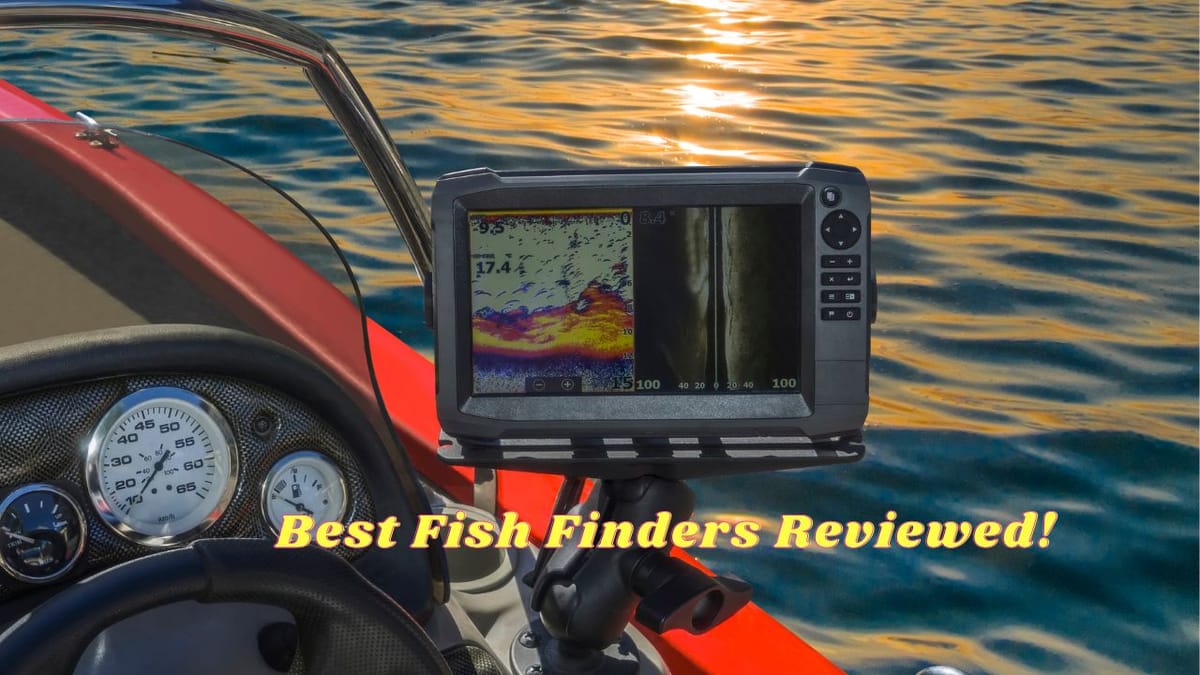Table of Contents
Fishing is an age-old activity that combines skill, patience, and sometimes a bit of luck. But with technology's advancements, anglers are constantly looking for ways to tilt the odds in their favor. Enter the fish finder, a device that promises to revolutionize the way we fish. But is it truly a game-changer or just another gadget? Let's dive in and find out.
Key Takeaways:
- Understand the functionality and benefits of using a fish finder.
- Learn about the cost versus the potential return on investment of a fish finder.
- Discover how fish finders can enhance the fishing experience for anglers of all levels.
With detailed and rigorous research, we provide our readers with the finest recommendations. Our recommendations are our opinions. Our cause is backed by reader support- for every click made through one of our affiliates links, a commission may be earned at no extra expense to you! As an Amazon Associate, Reviewsopedia may earn a commission from qualifying purchases. Thank you and enjoy!
What is a Fish Finder and How Does It Work?
A fish finder is a sonar device that detects underwater objects, primarily fish, by emitting sound waves and interpreting the echoes that return. The technology, which was once exclusive to commercial fishing vessels, has now become accessible to recreational anglers. It consists of two main components: a transducer, which sends and receives sonar signals, and a display, which shows the underwater landscape and fish locations.
The device works by sending sound waves into the water. When these waves hit an object, they bounce back to the transducer, which then calculates the distance and size of the object. This information is translated into a visual representation on the screen, allowing anglers to see fish and structure beneath the water's surface.
The Advantages of Using a Fish Finder
Fish finders offer a significant advantage by taking the guesswork out of locating fish. They can reveal fish hiding spots, schools, and even help identify the species based on the shape and size of the echoes. This technology is especially useful in deep waters where it's challenging to predict fish movements.
Moreover, fish finders can display water temperature and depth, which are critical factors in understanding fish behavior. By using this data, anglers can determine the best fishing spots and the right time to cast their lines. This not only saves time but also increases the chances of a successful catch.
Types of Fish Finders on the Market
When it comes to choosing a fish finder, there's a wide range of options available, from basic models to advanced units with GPS integration and chart plotting capabilities. Basic fish finders are great for beginners or those on a tight budget, while more sophisticated models offer features like high-definition displays, side-scan, and down-scan imaging.
Each type of fish finder caters to different fishing styles and environments. For instance, ice fishing requires a portable fish finder with a flasher, while deep-sea fishing benefits from a model with powerful sonar and a large screen for better visibility.
Cost vs. Return on Investment
Investing in a fish finder can be a significant expense, with prices ranging from under a hundred dollars to several thousand. The key is to balance the cost with the potential benefits. For avid anglers who fish regularly, a high-end fish finder could be worth the investment due to the time saved and increased catch rates.
However, for casual fishers, a mid-range or even a basic model might suffice. It's important to consider how often you'll use the device and whether the features justify the price tag. Remember, the most expensive fish finder isn't always the best choice for every angler.
Fish Finder Features to Consider
When shopping for a fish finder, it's crucial to consider the features that will best suit your fishing needs. Screen resolution and size can affect how easily you can interpret the data, while the frequency of the sonar determines the detail and depth of the readings.
GPS functionality is another feature to consider, as it allows you to mark productive fishing spots and navigate waters more efficiently. Additionally, some fish finders come with networking capabilities, enabling you to connect multiple devices and share information.
How to Use a Fish Finder Effectively
Owning a fish finder is one thing, but using it effectively is another. It's essential to learn how to read and interpret the data displayed on the screen. This involves understanding the difference between fish arches, schools, and underwater structures.
Proper installation and calibration of the device are also critical to ensure accurate readings. Anglers should take the time to familiarize themselves with the fish finder's settings and adjust them according to the fishing conditions and environment.
Enhancing Your Fishing Experience
A fish finder can significantly enhance your fishing experience by allowing you to explore new areas with confidence. It can also be a great educational tool, helping you learn more about fish behavior and habitat, which can improve your overall fishing skills.
Additionally, fish finders can make fishing more enjoyable for people of all ages and skill levels. They add an element of excitement as you watch fish approach your bait in real-time, turning waiting time into an interactive experience.
Fish Finder Limitations and Considerations
While fish finders are incredibly useful, they do have limitations. They can sometimes give false readings due to debris, water currents, or air bubbles. It's also important to remember that a fish finder is not a substitute for fishing knowledge and experience.
Environmental considerations should also be taken into account. Responsible anglers should use fish finders in a way that does not disrupt marine life or habitats. It's about enhancing the fishing experience, not exploiting it.
The Verdict: Is A Fish Finder Worth It?
Determining whether a fish finder is worth the investment ultimately depends on your individual needs and fishing style. For those who fish frequently or competitively, a fish finder can be an invaluable tool that pays for itself over time. For casual anglers, a basic model may be sufficient to add a bit of fun and efficiency to their fishing trips.
Before making a purchase, it's important to research and choose a fish finder that offers the features you need at a price that fits your budget. With the right device, you can look forward to more productive and enjoyable fishing adventures.
Summary
Fish finders have transformed the fishing landscape, offering anglers the ability to locate fish with precision and ease. They come in various types and price ranges, each with its own set of features to suit different fishing environments and styles. While they are not without limitations, the benefits of using a fish finder can outweigh the costs for many anglers. Whether you're a seasoned pro or a weekend hobbyist, a fish finder can be a worthy addition to your fishing arsenal.
FAQ Section
Can fish finders be used in all types of water bodies?
Yes, fish finders can be used in various water bodies, including lakes, rivers, and oceans. However, it's important to choose a model that's suitable for the specific environment you plan to fish in.
Do I need a fish finder with GPS?
While not necessary for everyone, a fish finder with GPS can be extremely helpful for marking fishing spots, navigating unfamiliar waters, and tracking your route.
How accurate are fish finders?
Fish finders are generally accurate when used correctly. However, factors like water conditions, device settings, and user interpretation can affect their accuracy. It's important to learn how to use and interpret your fish finder's data to get the most accurate readings.
Other Related Articles









